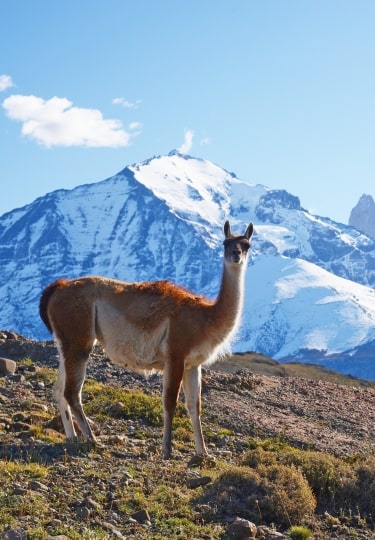With its high, frozen peaks, barren desserts, and dramatic weather, Patagonia might seem inhospitable to animals. But nature always finds a way, and the wildlife in Patagonia is extraordinary.
Condors soar through its mountains, and its rivers, woodlands, and steppes support many other species of birds and animals. The Atlantic and Pacific oceans shelter large numbers of whales, dolphins, and penguins.
Its varied terrain makes Patagonia not only an adventurer’s paradise but also a natural paradise. Species seldom found elsewhere on earth thrive here at the remote tip of the South American continent.
Puma
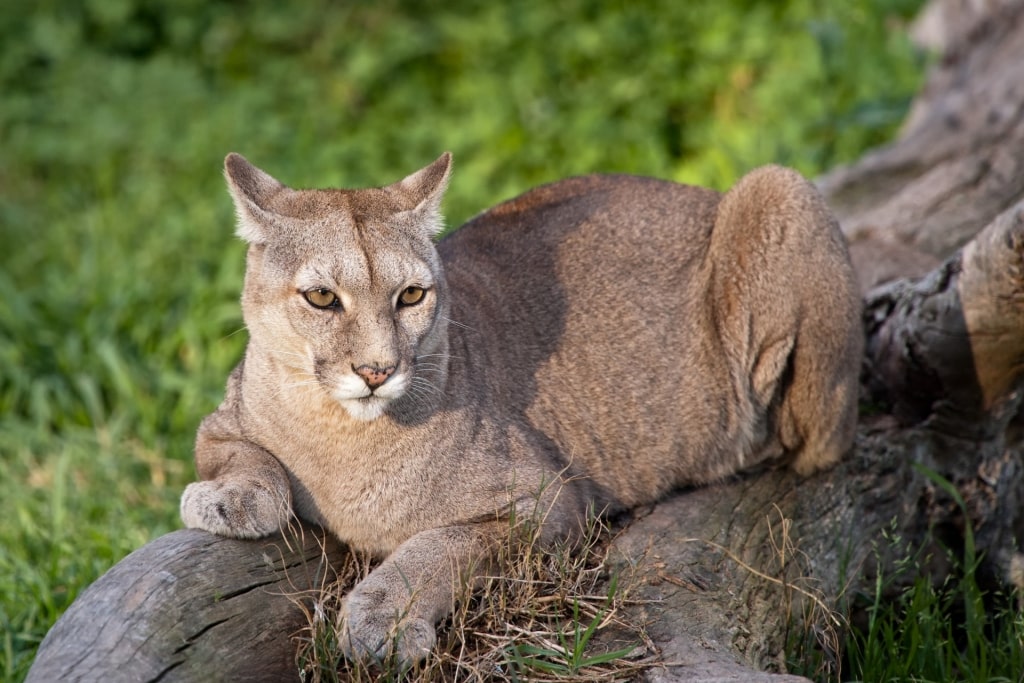
Puma
Known as mountain lions or cougars in North America, pumas are the big cats of the continent. Patagonia, however, has the highest density in the Americas.
With plenty of prey, and space to roam, pumas here are also typically larger (up to 180 pounds) than in North America. Don’t worry, as that abundance of prey means attacks on humans are unknown.
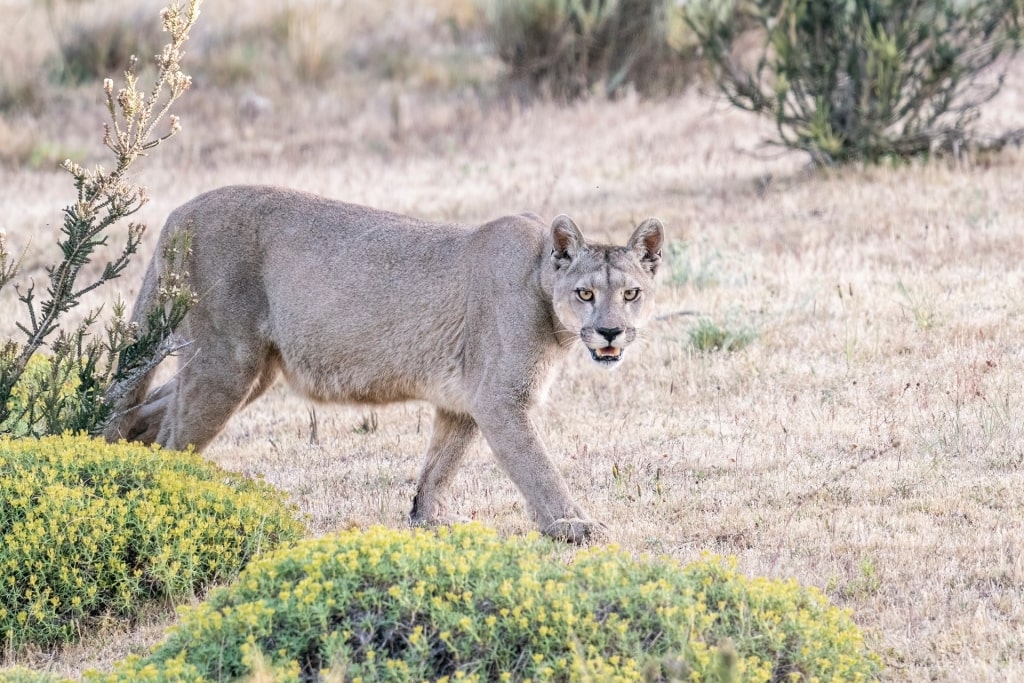
Puma
The best time to visit Patagonia to see them is dusk and dawn, so be ready to keep unusual hours. Binoculars are even more of an essential for these elusive predators than they are on most wildlife tours.
Guanaco
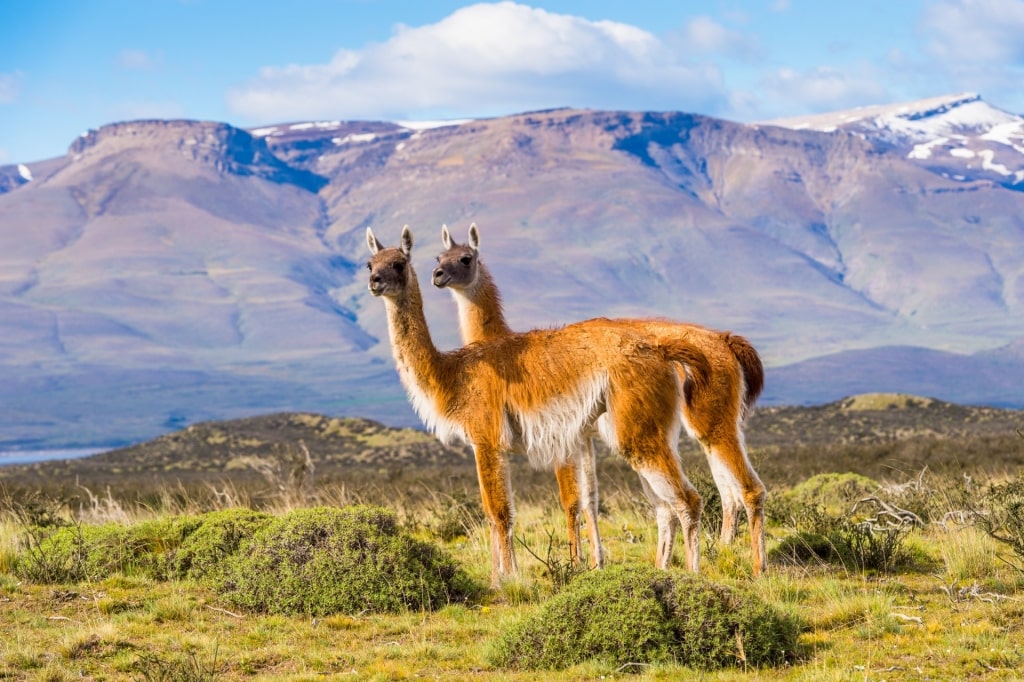
Guanaco
Wherever you expect to see pumas, you will also see guanacos—one of their favorite prey. The alarm call of a sentinel guanaco is a good sign that predators are around.
Once hunted for their thick wool, but now protected, guanacos can be found throughout Patagonia. They are the wild forebearers of what is now the domesticated llama and are among the most enchanting animals in Patagonia.
They are members of the camelid family—which also includes the alpaca and vicuña. Herds are formed from a lead stallion with up to a dozen adult females, and their young.
Vicuñas

Vicuña
Vicuñas are the wild ancestors of domesticated alpacas. They are shorter than guanacos, weighing in at about 100 pounds against 200 pounds.
The best way to distinguish the two might be altitude. If you see a herd above 20,000ft, it’s probably vicuñas; below that, and it’s guanacos.
Vicuña wool is particularly fine, and it was once illegal for anyone but the Inca emperors to wear it. Hunting reduced numbers to only 6,000 in the 1970s, but there are now an estimated 350,000 in the wild.
Patagonian Mara
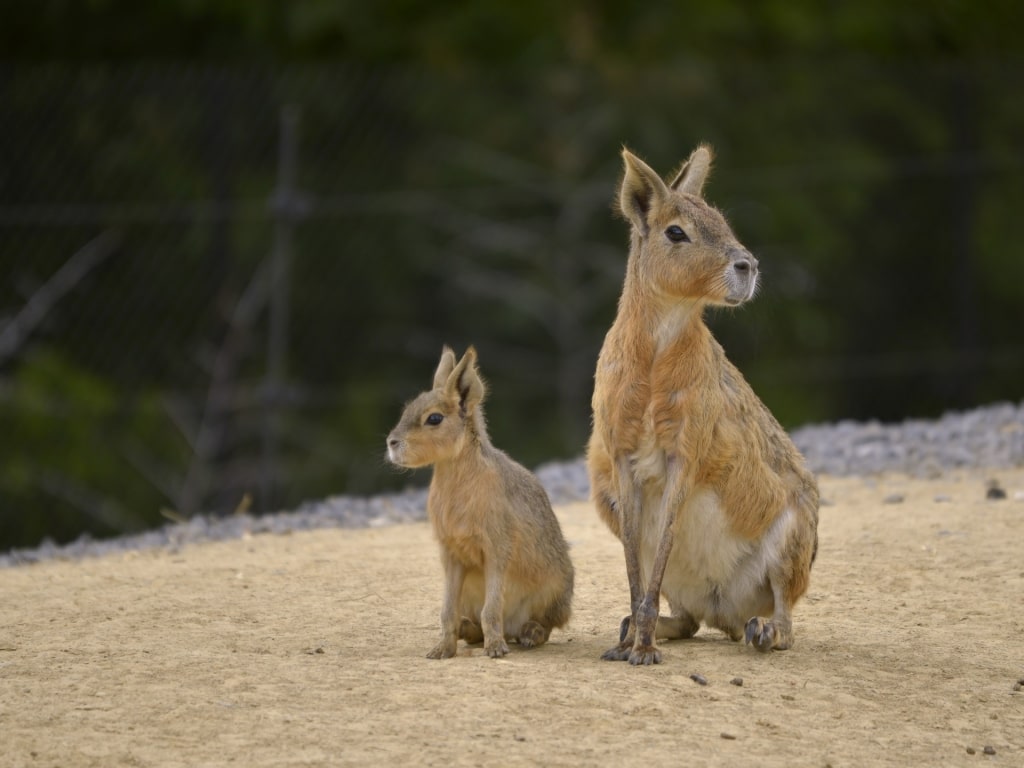
Patagonian Mara
This large rodent, looking like a cross between a rabbit and a deer, is common throughout Patagonia. Like rabbits, they live in burrows and are herbivores.
The sandy soils around Puerto Madryn in Argentina provide one of the best places to see them, as their preferred terrain is open grassland. The ongoing loss of this habitat, the introduction of sheep, and European hares are all putting pressure on them.
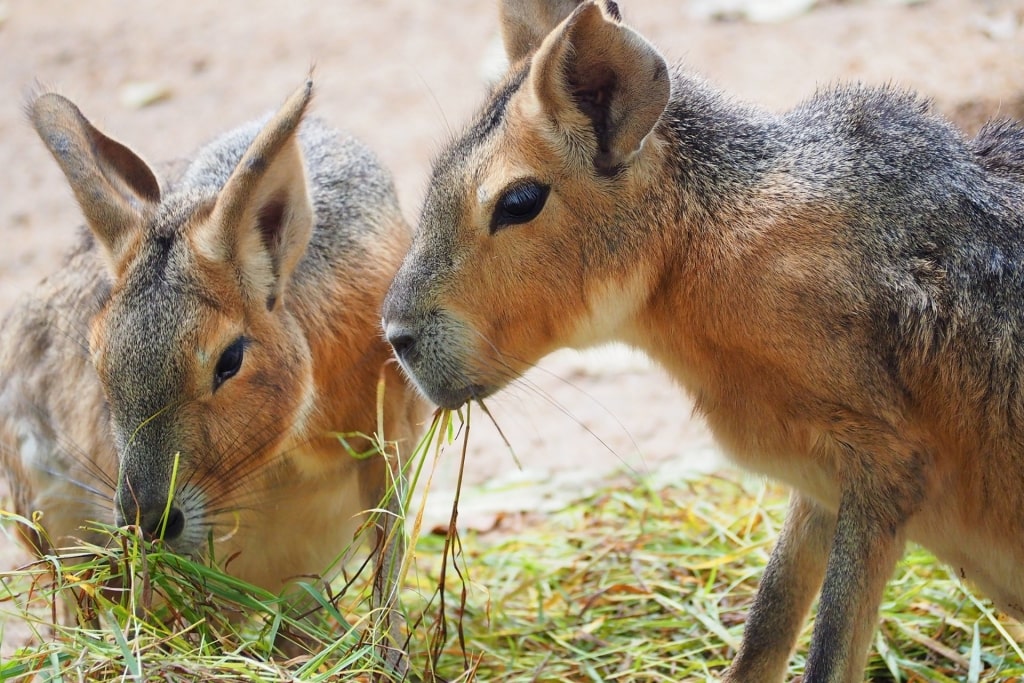
Patagonian Mara
Patagonian maras mate for life, producing one litter a year with one to three young. Active during the day, they are one of the easiest animals in Patagonia to spot.
Patagonian Culpeo Fox
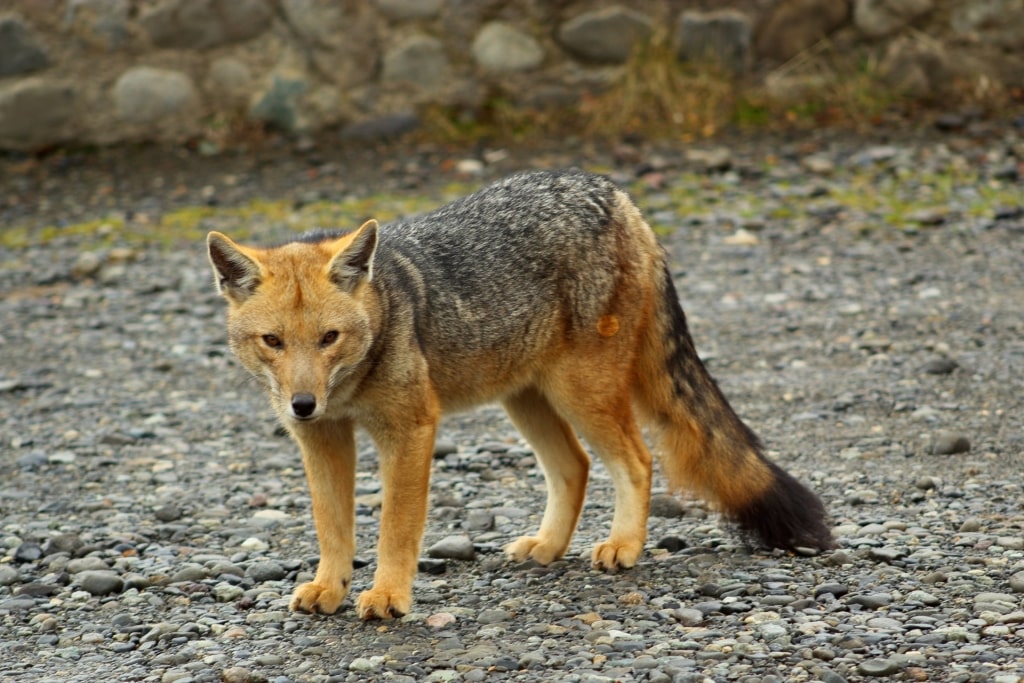
Patagonian Culpeo Fox
Another predator found throughout Patagonia, the culpeo fox looks very like a red fox. It is a wild dog, the second largest native canid in South America after the maned wolf.
It preys on birds, rodents, reptiles, and newborn lambs or guanacos. Smaller than the puma, with which it shares a habitat, the two can happily coexist.
The culpeo fox is also called the Andean fox, or zorro culpeo. One of the best places to see it is Tierra del Fuego.
Dwarf Armadillo
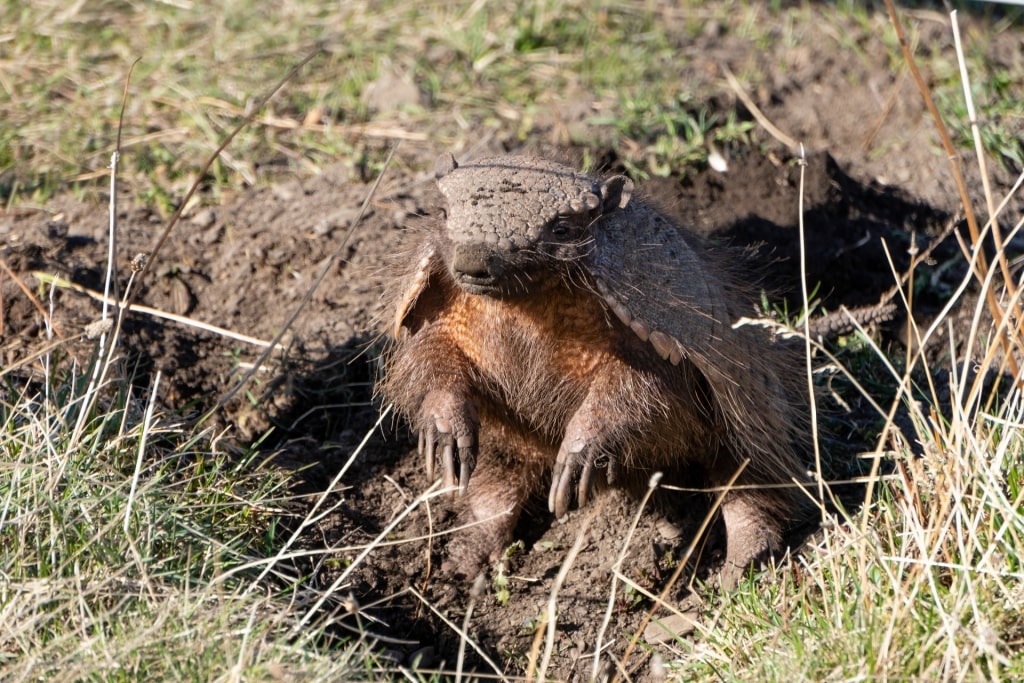
Dwarf Armadillo
As an animal that digs for its prey, this smallest of the armadillo species prefers sandy soils. It has found those in the grasslands and deserts of Patagonia.
A solitary animal, it is active during the day, sheltering at night in burrows. It feeds on insects such as spiders, earthworms, or scorpions, as well as on roots.
In turn, the dwarf armadillo is preyed on by pumas, foxes and eagles, while ferrets and snakes will attack the young. You have a good chance of seeing them, except in winter when they hibernate.
Geoffroy’s Cat
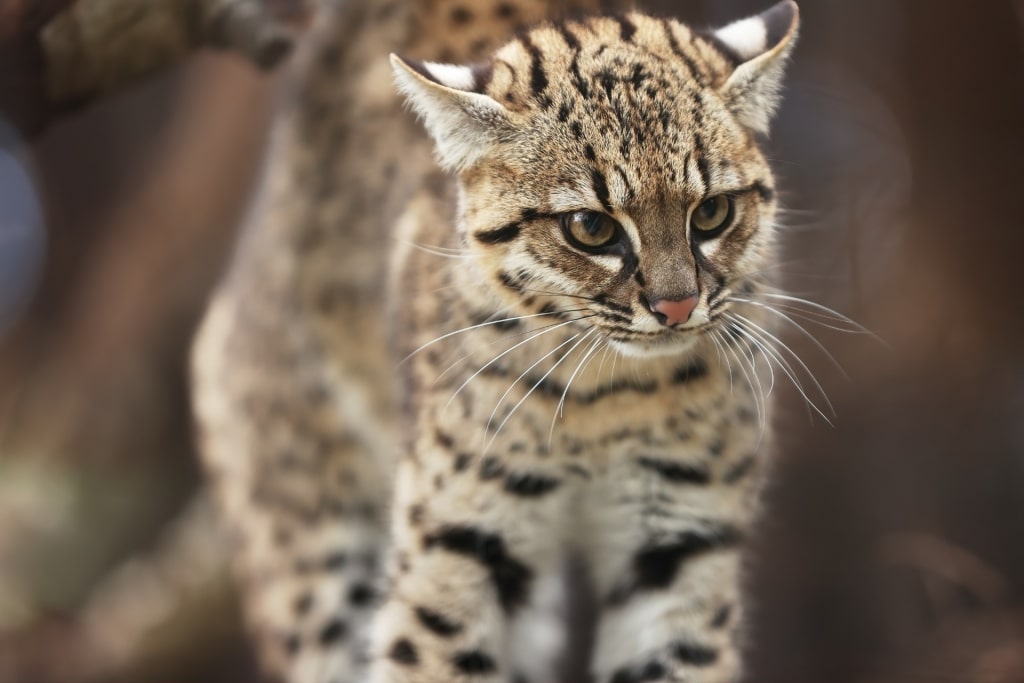
Geoffroy’s Cat
About the size of a domestic cat, and gray or black in color, this wild cat has a healthy population. However, it is nocturnal, so you will be lucky to spot one during the day.
Found in Argentine Patagonia down to the Straits of Magellan, it is very rare in Chile. As well as most of Argentina, its range includes Bolivia, Brazil and Uruguay.
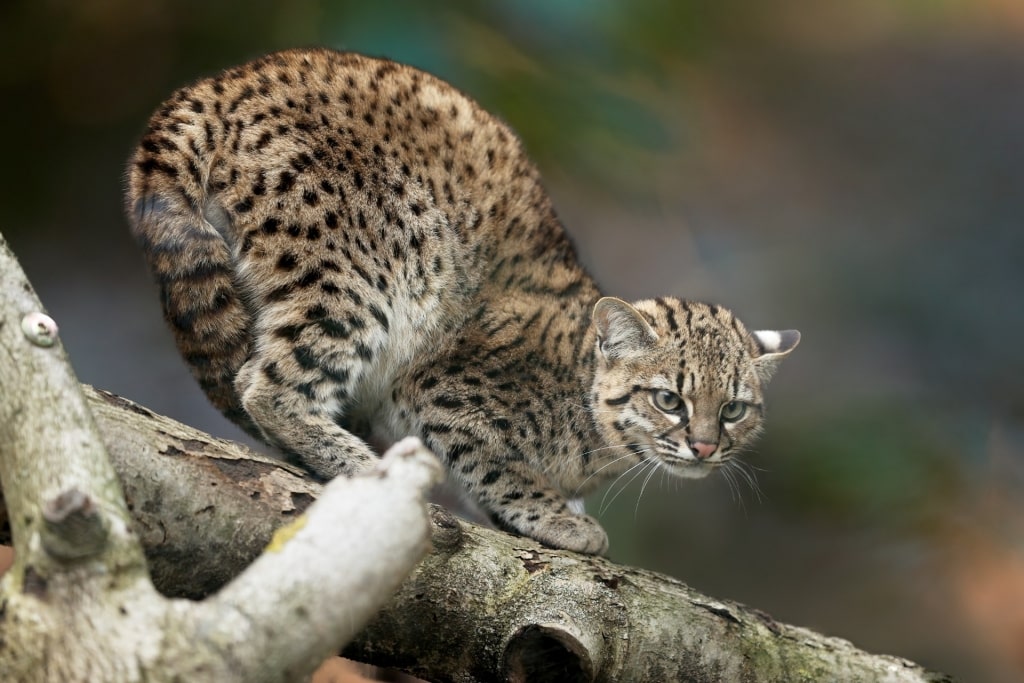
Geoffroy’s Cat
Look for it in pampas landscapes, with open woodland or scrub, where it can find cover to hunt. The cat preys on small mammals, lizards, snakes, and birds.
Patagonian Skunk
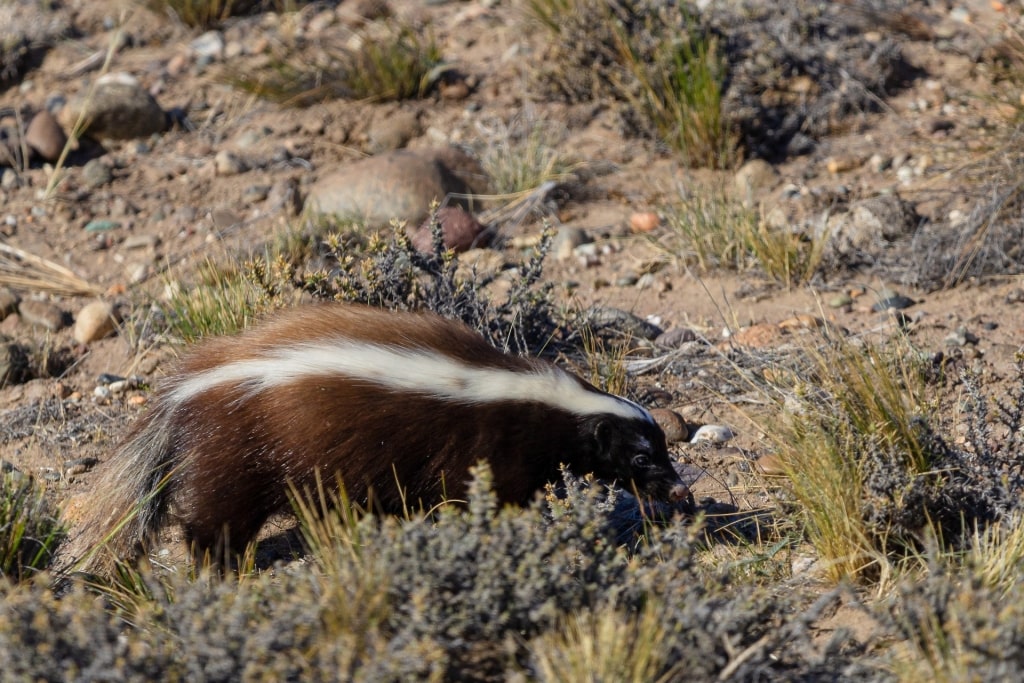
Patagonian Skunk
The Patagonian skunk is also known as Humboldt’s hog-nosed skunk, for its distinctive nose. That flexible proboscis is used for rooting out insects, which form the major part of its diet.
While a skunk is not necessarily an animal you want to get close to, they remain fascinating animals. Its preferred habitat in Patagonia is open grasslands, where it is found in both Chile and Argentina.
Its strong claws make short work of digging for food and making a den. The foul scent, launched from its anal glands, is a powerful defense against attacks.
Magellanic Woodpecker
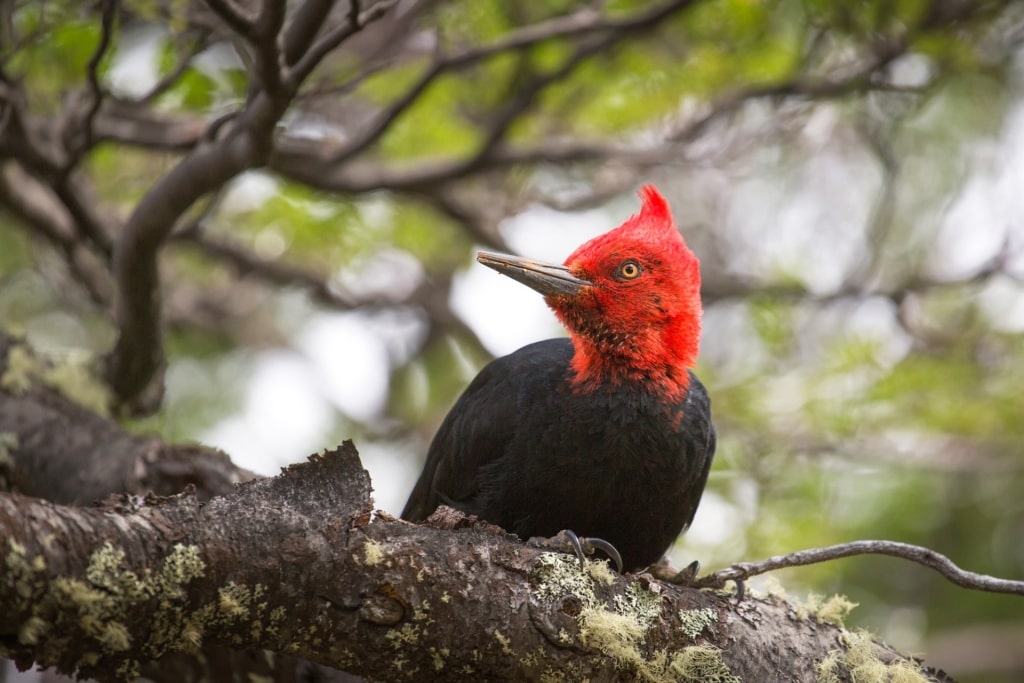
Magellanic Woodpecker
This striking black bird is the largest woodpecker in South America. They are found in woodlands, where they drill holes in search of larvae, beetles, and other insects.
The sound of this South American bird will carry long distances, but they are hard to see in their wooded habitat. They also fly very fast, so you are more likely to hear than see them.
Listen out for them among Patagonian woodlands in both Chile and Argentina. You can also expect to hear them on Tierra del Fuego.
Austral Pygmy Owl
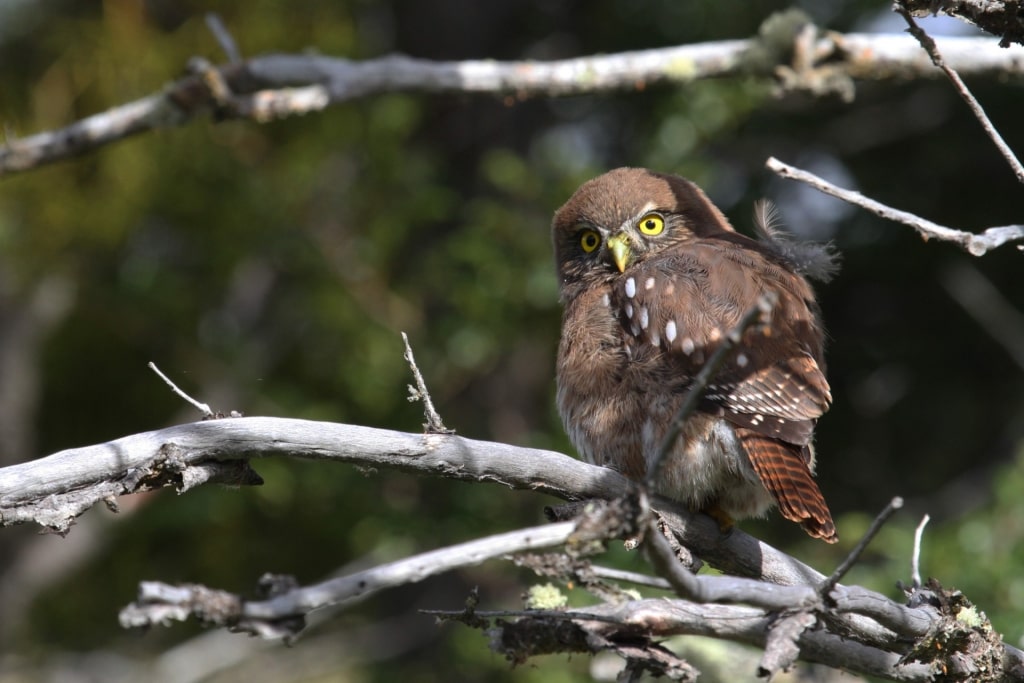
Austral Pygmy Owl
Commonly found throughout Chile and parts of Argentina, this small owl often hunts during the day. It tends to prefer woodland, though, making it hard to spot.
Its tiny size doesn’t help, of course, but its noisy whistles and the heightened activity of other small birds nearby will. You will also hear it at night, when it continues its hunt for small birds, mammals, reptiles and insects.
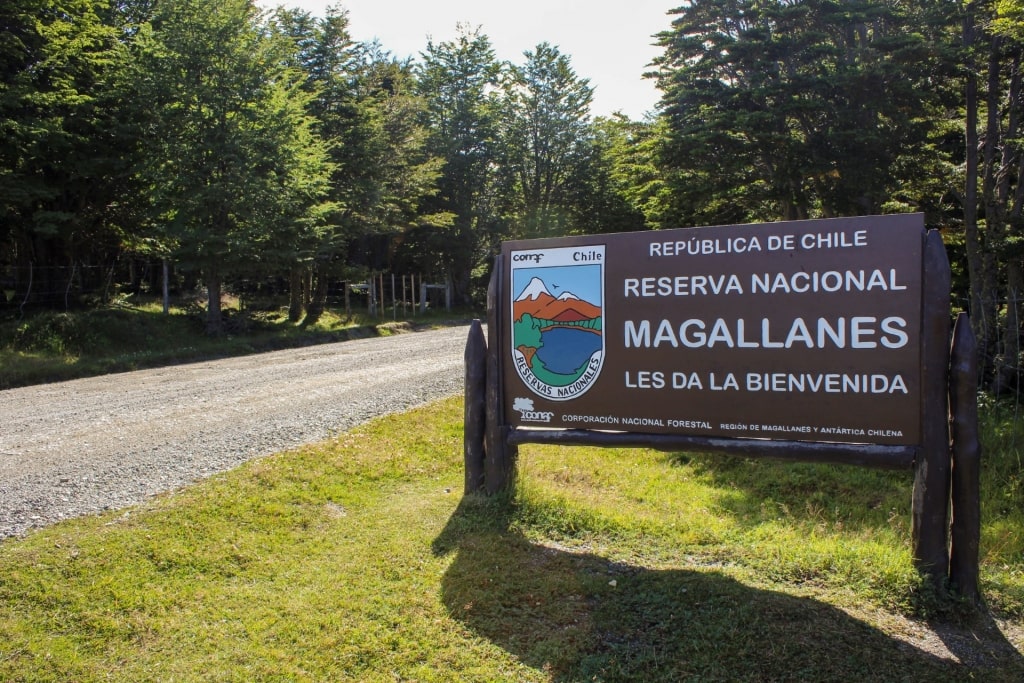
Magallanes National Reserve, Punta Arenas Photo by Natalia Reyes Escobar on Wikimedia Commons, licensed under CC BY-SA 4.0
One of the best things to do in Chile is to visit the Magallanes National Reserve in Punta Arenas, a lovely reserve where birdwatchers can hope to tick off many local species, including the austral pygmy owl.
Chilean Flamingo
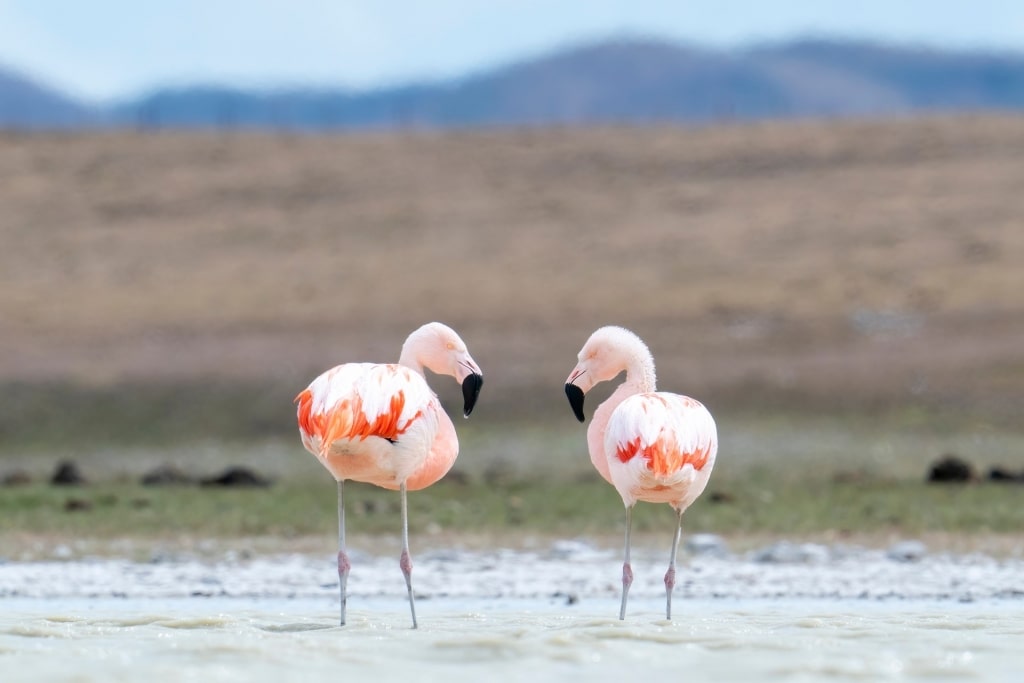
Chilean Flamingo
With its hooked bill, long legs, and pink feathers, the flamingo must be one of the easiest birds to recognize. They gather in large flocks around Patagonia’s lakes, fjords, and other bodies of water.
Born pale in color, the birds turn pink from their diet of small crustaceans. Their large bills act as a filter system while they’re feeding in shallow waters.
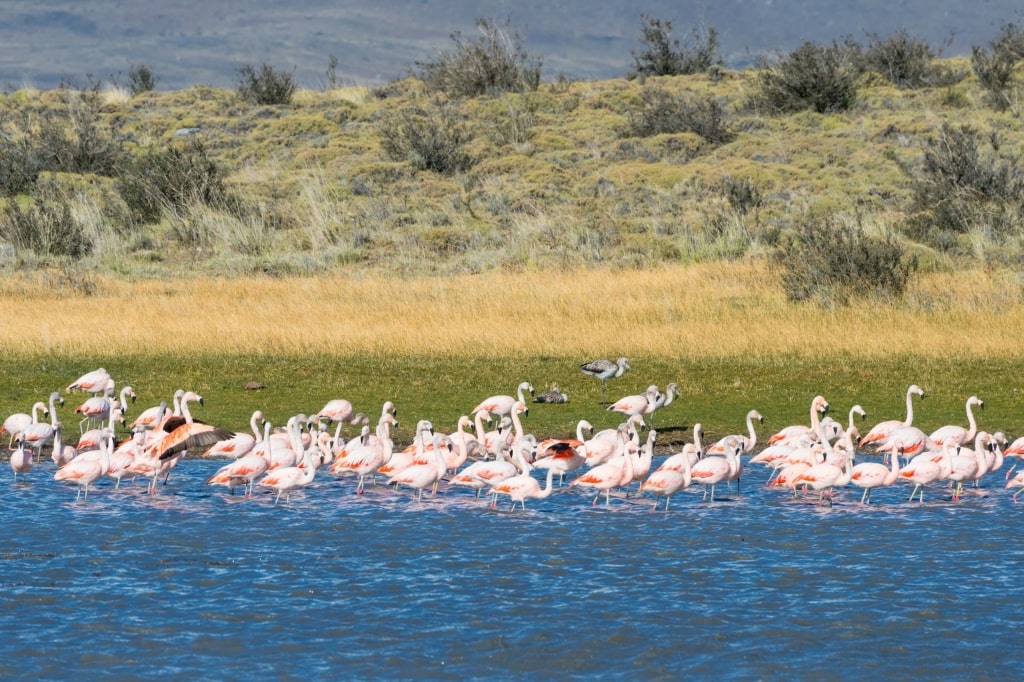
Chilean Flamingo
Appearing in Patagonia during the December through February breeding season, they lay one egg atop a mud mound. The size of the colonies helps protect the vulnerable eggs from predators.
Read: Best Places to Visit in Chile
Austral Peregrine Falcon
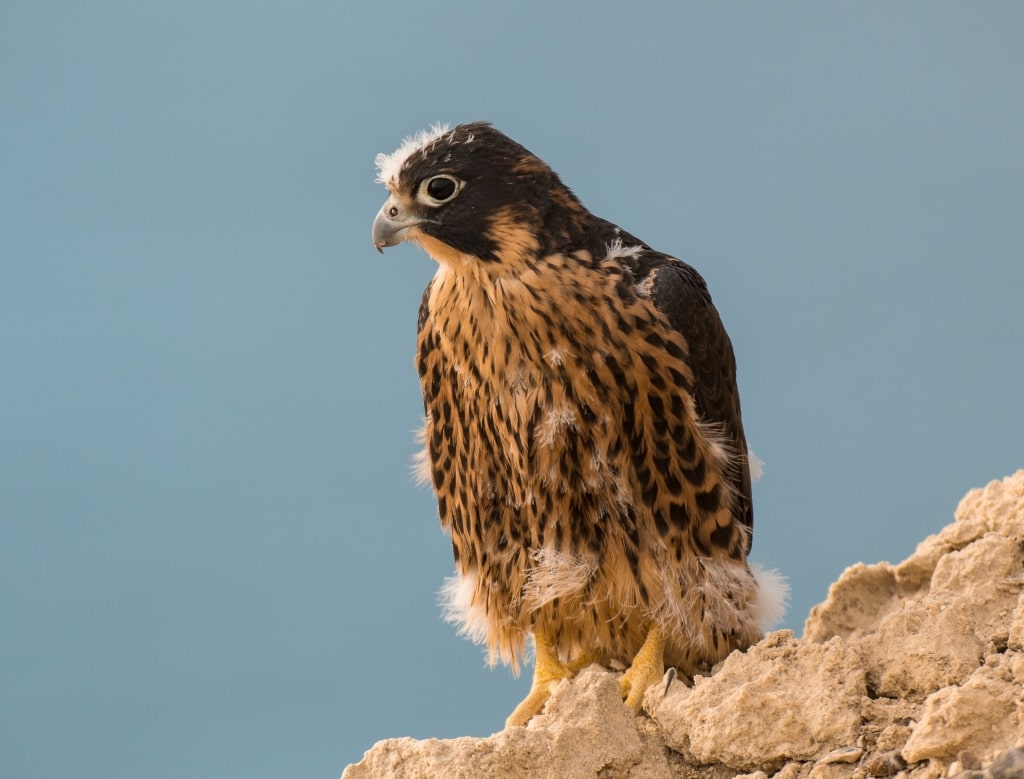
Austral Peregrine Falcon
With a range from Bolivia down to Tierra del Fuego, the Austral peregrine falcon is the fastest bird on Earth. It can dive at astonishing speeds of up to 200 miles per hour.
Like all falcons, it takes its prey in the form of other birds, such as pigeons, in the air. That diving speed gives its catch little or no time to react.
Peregrine falcons nest in burrows, preferably on high cliffs, but also sometimes in grasslands. They are found throughout Patagonia, but you’ll need a good pair of binoculars to see these high-flying predators.
Andean Condor
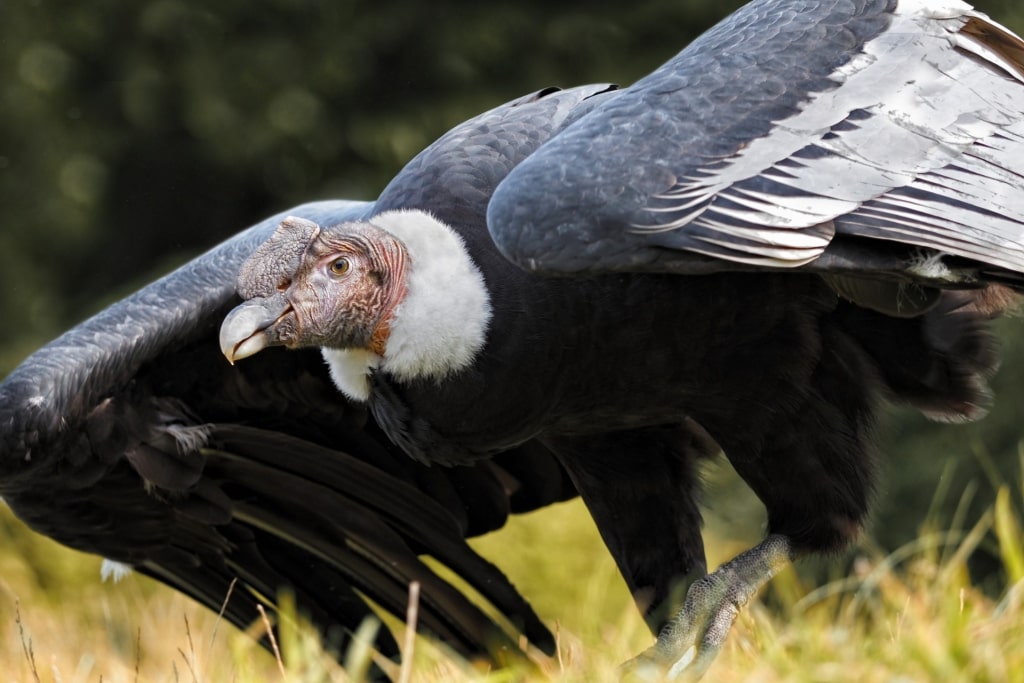
Andean Condor
This symbol of the Andes is among the world’s very largest flying birds, with a wingspan over ten feet. That span allows them to soar for miles in their high mountain habitat, while they search for prey.
They are members of the vulture family, sharing that distinctive bald head of the species. They feed on carrion, a vital role in clearing away dead wildlife.
Punta Arenas, Chile, has the best viewing sight in Patagonia, with dozens of condors seen throughout the year. But you might spot these magnificent birds in any of the Andean national parks or even along the coast.
Read: Best Things to Do in Punta Arenas
Darwin’s Rhea
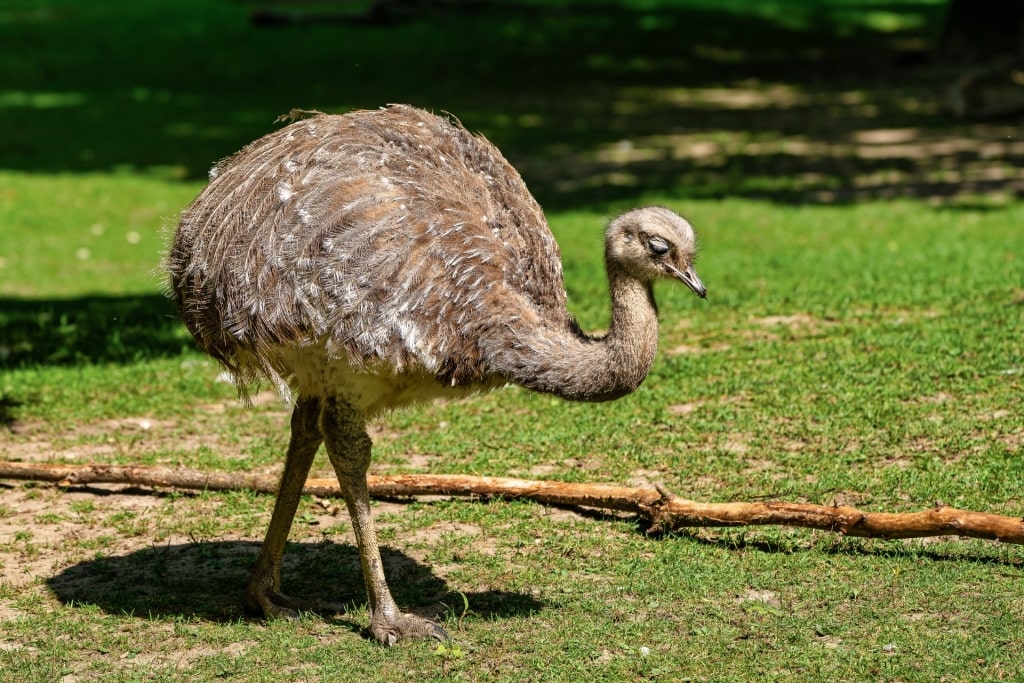
Darwin’s Rhea
This large, flightless bird was once common throughout Argentina and Chile but numbers are falling. Adults are large enough to have no predators, but egg loss, pesticides, and loss of habitat are threats.
To help their conservation, a new flock was introduced into Chile’s Patagonia National Park. This is now a great place to see the species, with the population growing healthily.
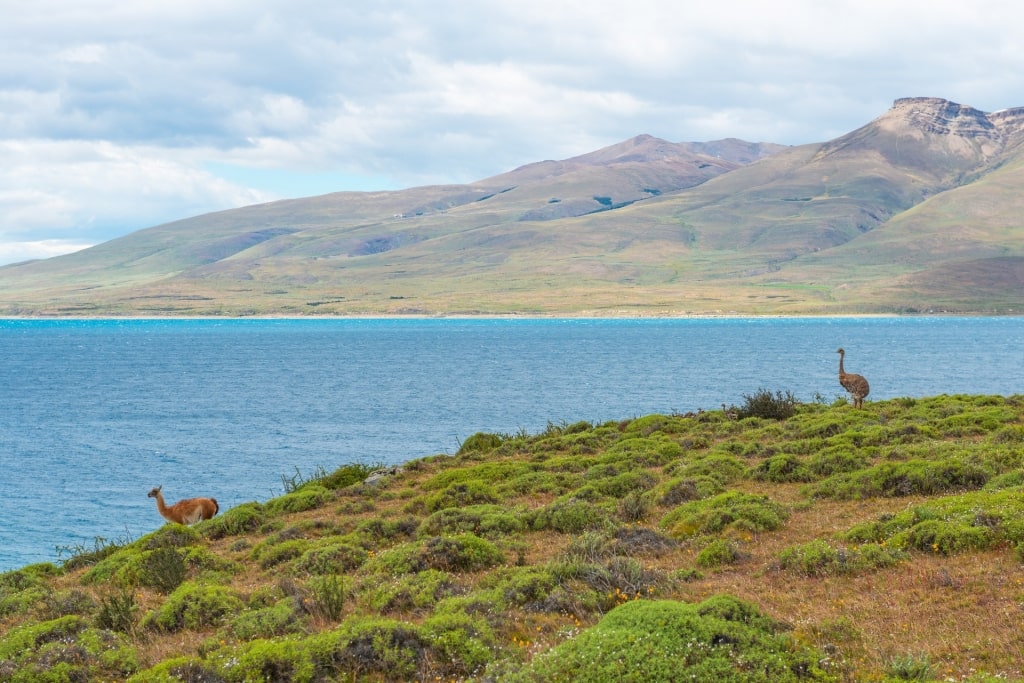
Darwin’s Rhea
Rheas and guanacos share the same grassland habitat and are often found cooperating in guard duties. They also share territory with the greater rhea, a finding which drove Charles Darwin to reshape his theories on the evolution of species.
King Penguin
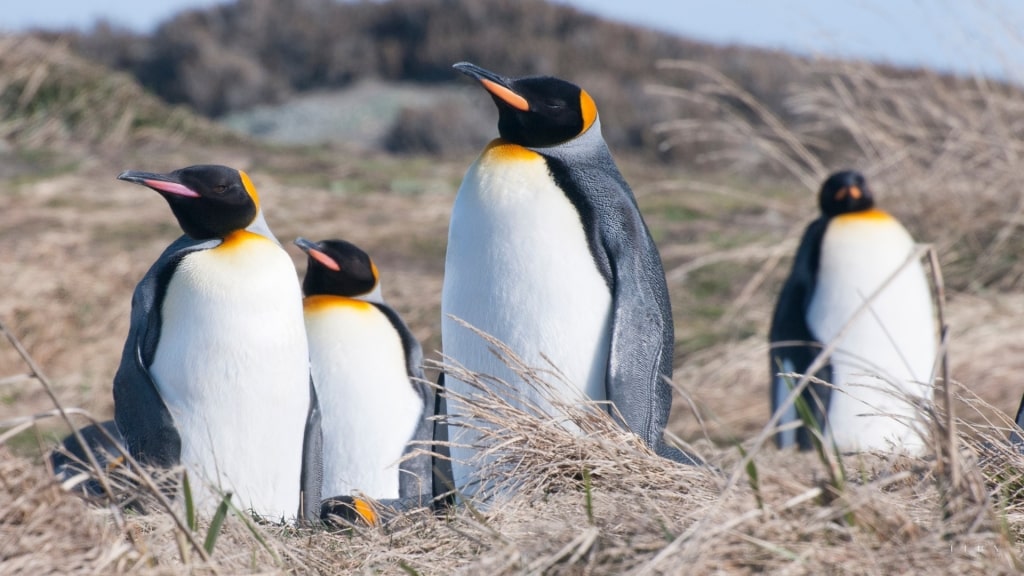
King Penguin
Patagonia is home to more penguins than people, with five species to be found. You’ll see Magellanic (the most common), Humboldt, gentoo, southern rockhopper, and king penguins.
The king penguin is the rarest, confined to a small corner of Tierra del Fuego, but growing in number. It was once thought to be the largest penguin, hence its name.
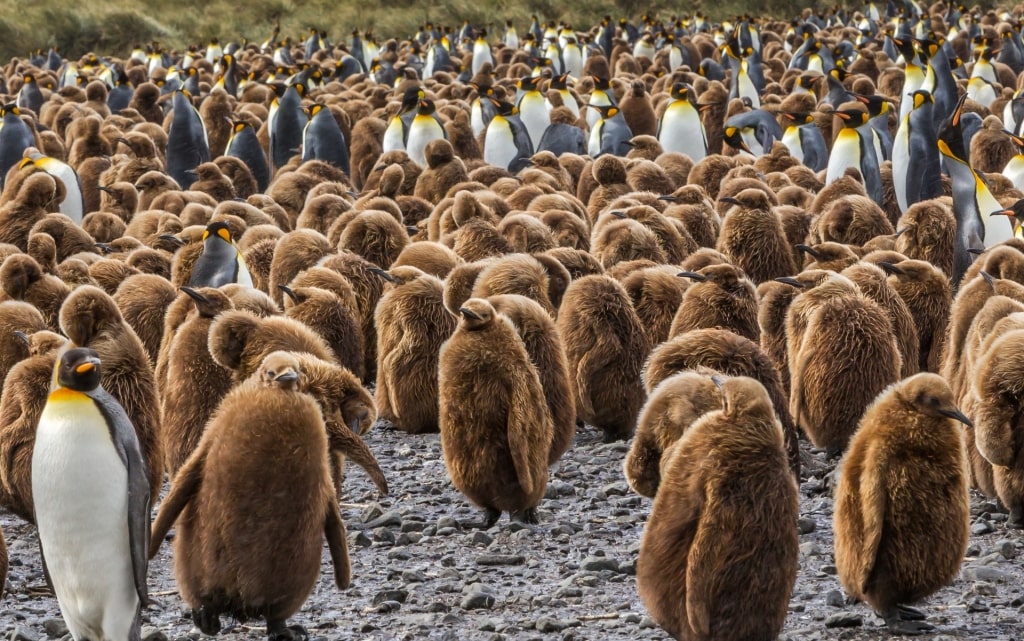
King Penguin
The penguin breeding season starts in September and lasts until mid-March. The peak viewing time is December through January, when the cute, fluffy chicks make their photogenic appearance.
Read: Where to See Penguins in South America
Southern Right Whale
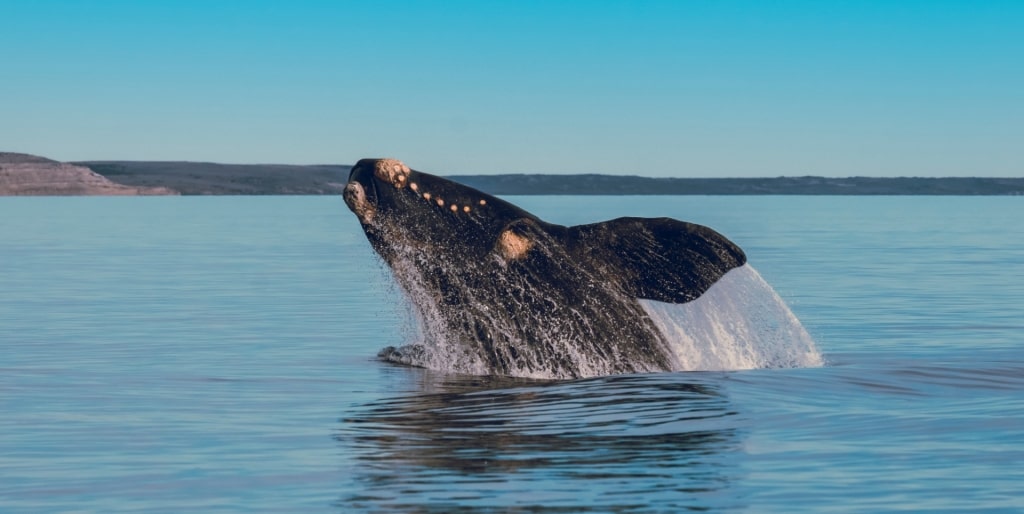
Southern Right Whale
Said to be named “right” because they were the perfect target for whalers, and floated when killed, these whales were hunted to near extinction. Now recovering well, record numbers of southern right whales are now being seen in Argentine Patagonia.
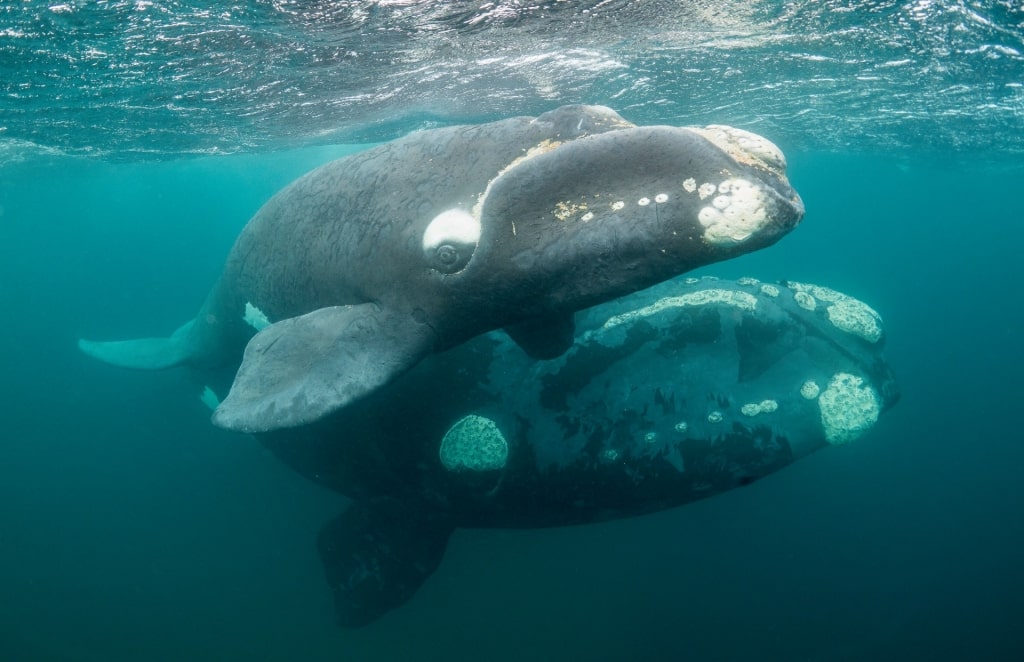
Southern Right Whale
Their feeding grounds are off Antarctica, but they migrate to Patagonia for the June through December breeding season. The Valdes Peninsula is a popular spot for sea and land-based whale watching.
Pregnancy lasts for a year, and the calves already weigh three tons at birth. They are then suckled for two years, meaning three years between births for the mothers.
Read: How to Spot Marine Mammals From a Cruise Ship
Orca
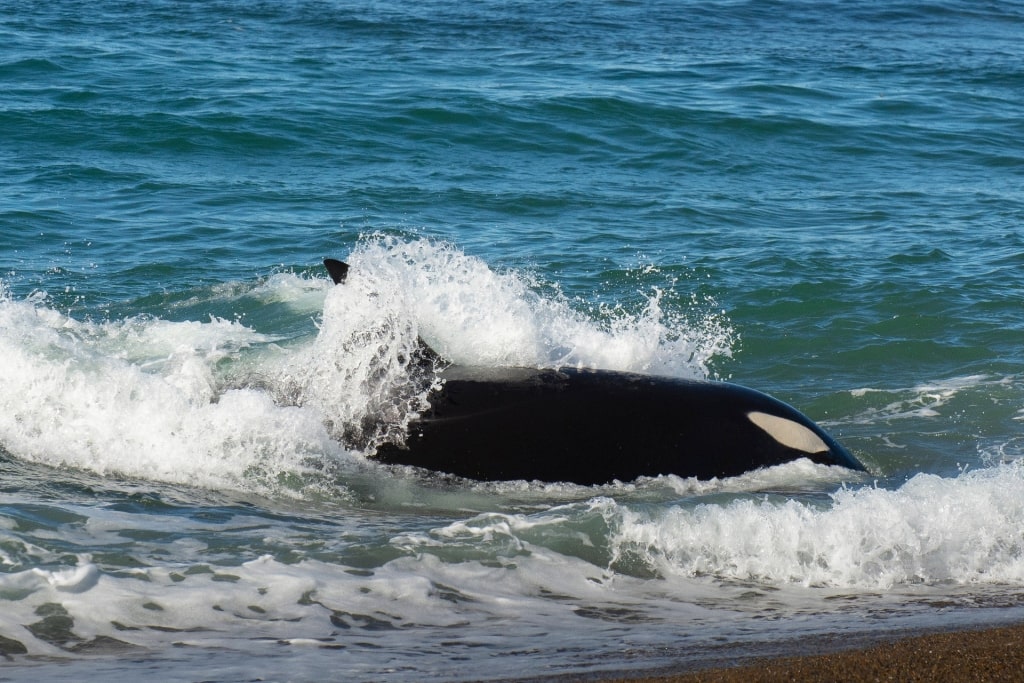
Orca
Also known as the killer whale, the orca is actually a member of the dolphin family. Its large black-and-white body makes it an easy sighting in calmer seas with no white-tops.
Orcas are very active near the surface, seeming to enjoy playing, but also hunting for prey such as sea lion pups. They live in family pods, and have no natural predators.
You’ll sometimes see them in the Chilean Fjords, but more commonly near the Valdes Peninsula, Argentina. Peak viewing months here are September through April.
Read: Best Places to See Orcas in the Wild
Commerson’s Dolphin
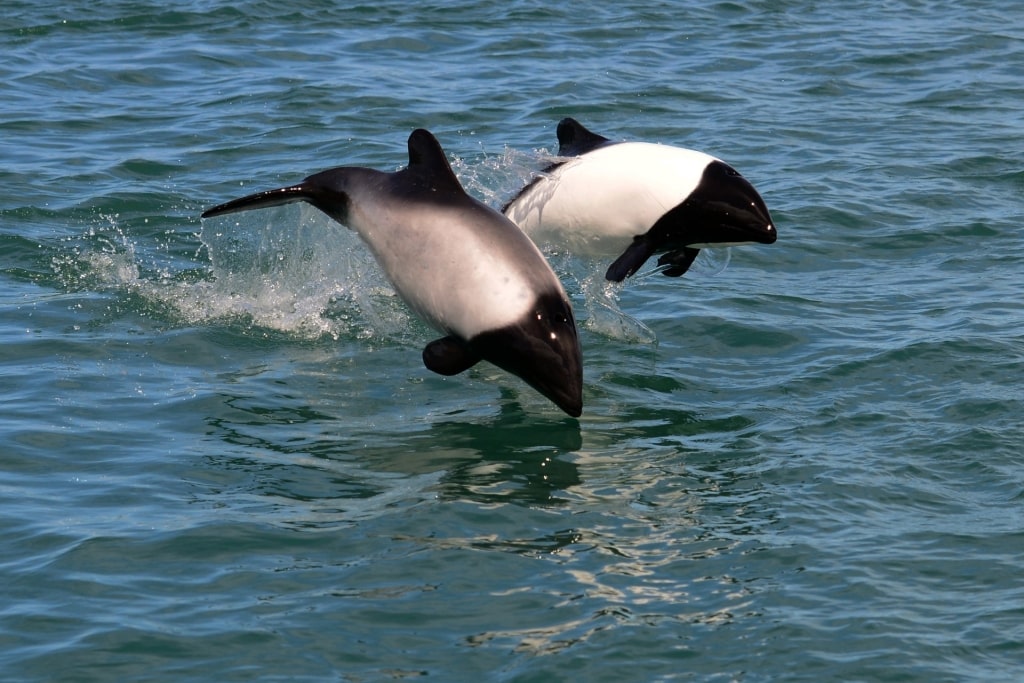
Commerson’s Dolphin
With its distinctive black and white coloring, this species is sometimes unkindly called the “skunk dolphin”. Its black head, tail, and flippers do stand out from the all-white body.
From May through January, you’ll see them along the Argentine coast down to Tierra del Fuego. A common dolphin, there are around 3,000 in the Strait of Magellan alone.
Like other dolphins, they will jump out of the water. They will also swim upside down from time to time, perhaps making it easier for them to spot prey.
Southern Elephant Seal
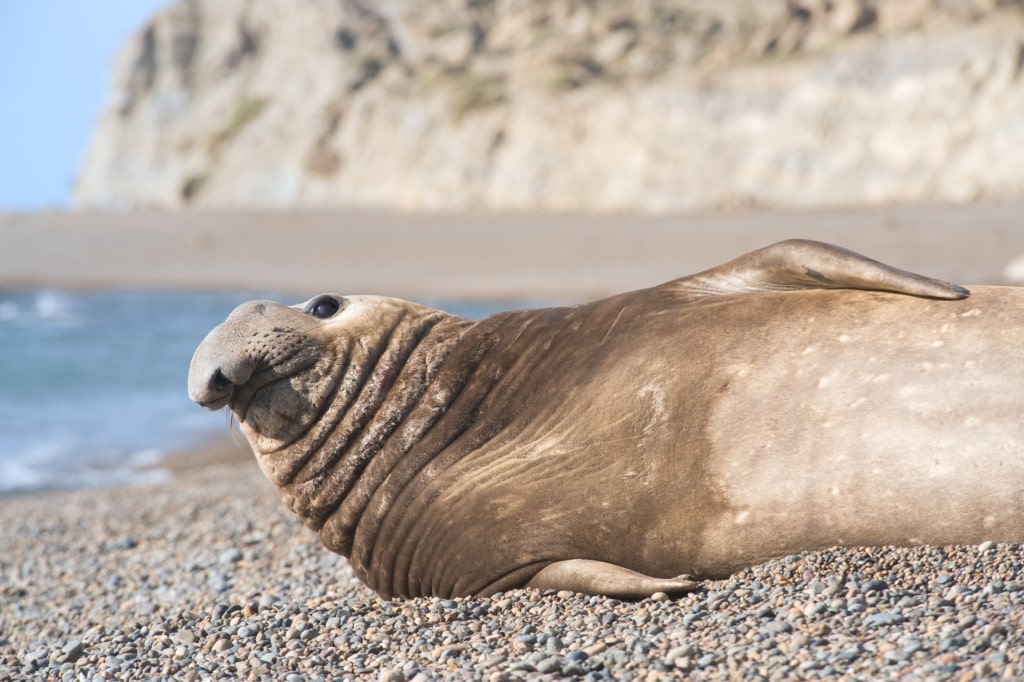
Southern Elephant Seal
Taking their name from their large proboscis and size, the elephant seal can weigh up to four tons. Males are about ten times the weight of the females, the largest disparity of any animal.
Their diving ability is also impressive: they have been seen at depths of 7,000ft. Spending most of their time in the water, these enormous seals come out for the breeding season from December through March.
When you visit Patagonia, the best place to see them is Peninsula Valdes, Argentina. Their only continental breeding area outside Antarctica, this is also one of the largest.
South American Sea Lion
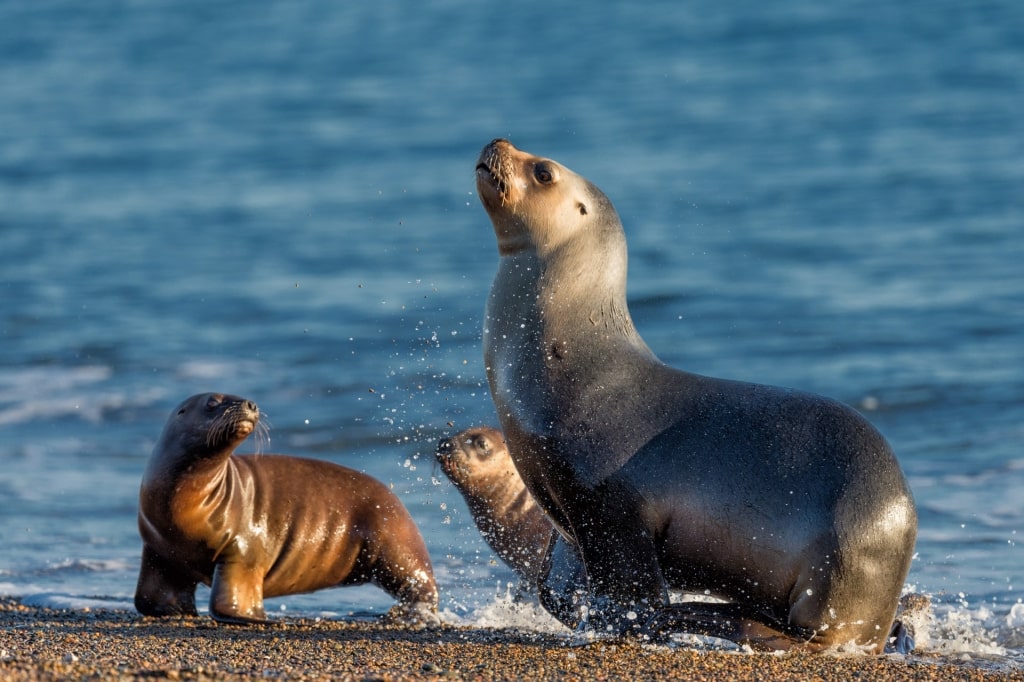
South American Sea Lion
The South American sea lion is common along the coasts of Chile and Argentina, as well as the Falkland Islands. In Patagonia, you’ll see them best around Puerto Madryn, Argentina, or in the Beagle Channel.
They form small, noisy colonies onshore, on South American beaches or rocks. Small harems of females are guarded by a much larger bull seal, who will scare off competing males.
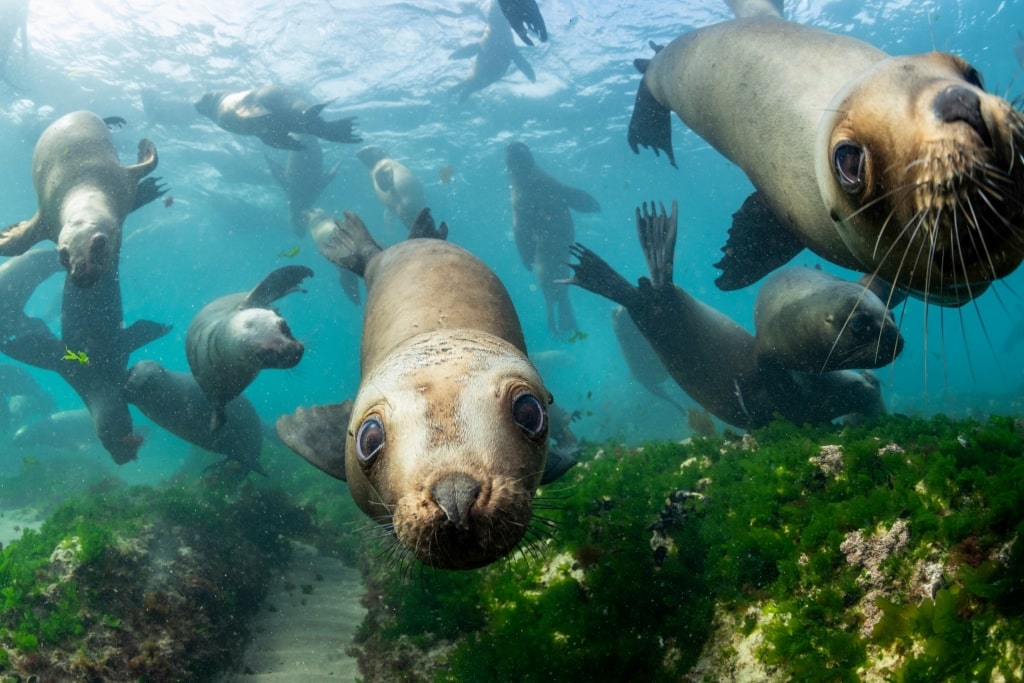
South American Sea Lion
Once hunted for their fur, South American sea lions are now protected, but unpopular with fishermen. They eat fish and cephalopods, such as squid and octopus, and in turn provide food for sharks and orcas.
Read: Best Countries in South America to Visit
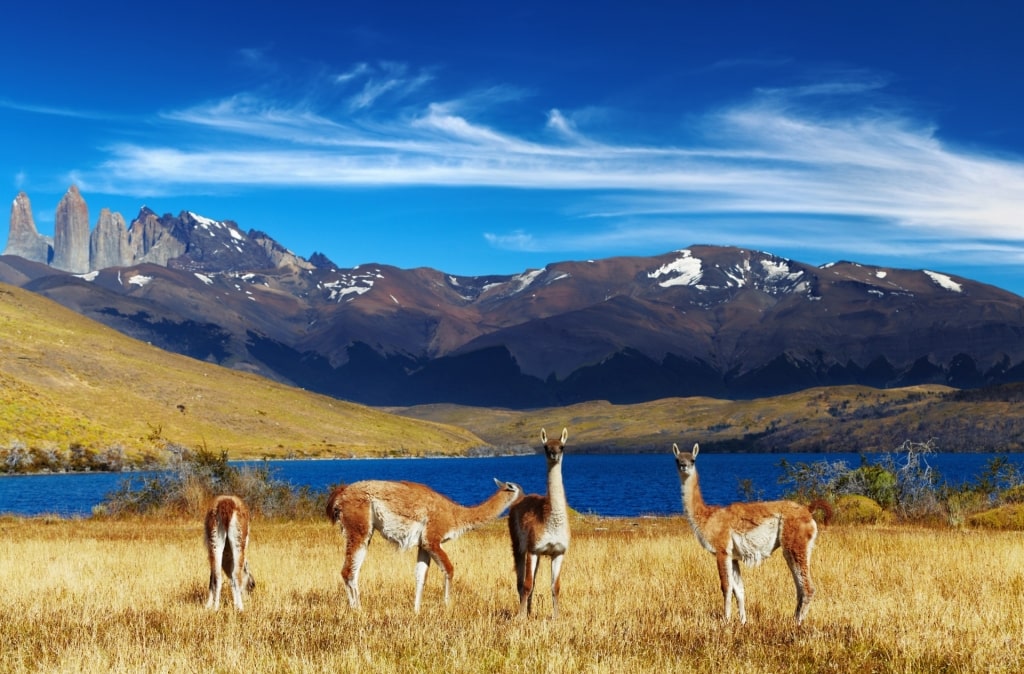
Guanaco
Are you inspired to visit Patagonia and spot the region’s amazing wildlife? Then browse our cruises to Patagonia and find the adventure that perfectly suits you.
